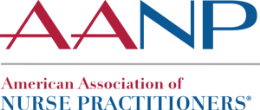Treating Alcohol and Substance Use Disorder With Honesty and Optimism

Experience insights from nurse practitioner experts on treating these chronic relapsing diseases.
The perception of patients living with alcohol use disorder (AUD) and substance use disorder (SUD) has changed significantly over the last few decades. Nurse practitioners (NPs) and other health care providers have cleared away misconceptions that these disorders are personal failings, the inevitable outcome of an individual’s social status or anything other than what they are — treatable diseases. NPs have always been in the forefront of recognizing and treating AUD and SUD, and new research, education and methods of collaboration are now available to further destigmatize and treat substance use disorders.
This good news is counterbalanced with concerning trends related to both AUD and SUD. The 2021 National Survey on Drug Use and Health found that “46.3 million people aged 12 or older (or 16.5 percent) had a SUD in the past year, including 29.5 million who had an AUD.” These findings were made during the pandemic, a time when The National Institute of Health reported “increases in substance use and drug overdoses in the U.S.” The statistics point toward an increased urgency in treating AUD and SUD, and NPs are leading the charge to approach patients suffering from SUDs armed with the most cutting-edge information and treatment options.
AUD and SUD From an NP Perspective
Laura Leahy, DrNP, APRN, PMH-CNS/FNP, CARN-AP, FAANP, FAAN, and Colleen Barry, MSN, APRN, FNP-C, CARN-AP, CSAP, are two NP leaders in treatment of AUD and SUD. They share their knowledge of diagnosing and treating AUD in a continuing education (CE) presentation entitled “Identifying and Managing Alcohol Use Disorder in Primary Care,” and elaborate on their research via episode 82 of NP Pulse: The Voice of the Nurse Practitioner®. As expert guides to these diseases, Barry and Leahy preview and further discuss their presentation, while exploring ways to approach SUD and AUD with patients reluctant or even ashamed to broach the subject of their drinking and substance abuse.
To bypass a patient’s embarrassment or shame regarding overuse of alcohol, Leahy advises asking patients — most of whom have not discussed alcohol use with a primary care provider — open-ended questions. Through this conversational method of requesting information, NPs may better gain an insight into not just how much a patient is drinking, but why. Barry also emphasizes the importance of coupling a consideration of screening information along with patient dialogue. “Take those extra few minutes, look over that screening, and then go into the room and talk to the patient,” Leahy says. “Identifying AUD and getting that diagnosis is going to start the road to treatment for the patient.”
Leah and Barry both stress the importance of speaking to their patients about AUD as they would an illness like asthma, diabetes or even major depressive disorder — as a “chronic relapsing disease.” Another theme of their discussion is to meet the patient where they are, even if the patient’s approach to the disease or their experience is not immediately in line with the perspective of their health care provider. Barry relates the following story:
“I had a patient come in. Her blood pressure was very high, and we had tried her on multiple medications to get her blood pressure under control. Her response was, ‘Why does everyone keep talking about my blood pressure? My feet hurt.’ And that’s when I stopped, and I started thinking about it — blood pressure is not a concern to her, the concern is that her feet hurt. If we were to take a few minutes, stop addressing what we know is wrong and start addressing what she feels is wrong, we’ll sometimes get the conversation going. Same thing with AUD. Maybe they’re not ready to stop, but they want to feel better. ‘What can I do to help you feel better? If you’re not ready to quit drinking, let’s talk about the things that you want to improve in your life.’”
Gain More Knowledge for Your Practice
Leahy and Barry’s presentation, “Identifying and Managing Alcohol Use Disorder in Primary Care,” is available now and offers 2.29 contact hour(s) (CH) of CE, 0.67 of which may be applied toward pharmacology. The presentation, available at no cost to members, offers you the ability to:
- Identify strategies to reduce alcohol-related stigma in screening, diagnosis and management.
- Evaluate validated screening tools for the identification of AUD and problematic alcohol use.
- Develop personalized pharmacological and nonpharmacological treatment plans for AUD.
- Integrate strategies to reduce patient, provider and institutional barriers to AUD care.
NPs interested in learning even more about AUD may also register for a four-part presentation addressing AUD as part of a wider exploration into several SUDs, entitled “Addressing Substance Use Disorders in Primary Care Bundle.” This presentation offers 3.04 CH of CE, .075 of which may be applied toward pharmacology.
If you are interested in discussing AUD and SUD with NP experts, consider joining the new Collaborative Learning Network (CLN) offered by The American Association of Nurse Practitioners® (AANP). The CLN is an open forum featuring dialogue on topics relevant to NPs, and members have the opportunity to converse directly with NP leaders like Leahy and Barry and to access resources including clinical studies and patient and provider tools.

